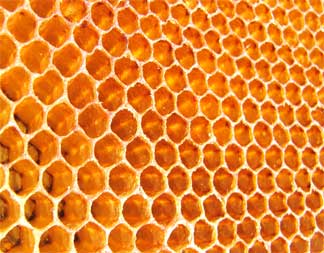In our garden or the grocery store the honeybee plays a part in our everyday life as a pollination and honey producer.
There was a time when apple and pear varieties in the northeast where considered to be commercially self-unfruitful. Their pollen was too heavy to be carried by wind. In the absence of insects, no transfer of pollen from one variety to another could take place, and very little fruit will set.
Pollination in Nova Scotia over 75 years ago was no problem since so commercial varieties of apples were grown in mixed orchards. Today the number of varieties continue to shrink and modern production is towards large blocks of single varieties which further impedes pollen transfer.

Modern farm practices have reduced the areas suitable for nesting sites of bumblebees and small solitary bees, which constitute the chief native pollinating insects. It has become increasingly difficult to procure good fruit sets.
Honeybees are the only pollinating insects which man has so far been able to breed and move around at will. Maximum results from using honeybees for orchard pollination can only be achieved if the operation knows the possibilities and this limitations of this living tool.
Since only pollen grains of the same species can accomplish fertilization, the most- effective insect pollinators are those which show fidelity to species they visit and revisit the same species. Honeybees in this regard rank very high and fly very low. Bumblebees and solitary bees come fairly close to honeybees.
ln the honeybee colony there are two groups working in the field – the scouts and the foragers. The scouts search for sources of nectar and pollen in locations not previously worked by the colony, or where a new species is coming into bloom in an area well worked by foragers for another species. The location, quality and quantity of any worth while sources are reported back in the hive, and the best of them will be worked over by the foraging group.
Nectar: Sweeter the Better
The quantity and sugar concentration of the nectar of different plants varies considerably. Temperature and moisture have a great effect upon secretion and concentration of nectar. Dandelion nectar is higher in sugar than apple nectar and is secreted freely at lower temperatures. The honeybees can distinguish between nectars showing a 5% difference in the sugar content, and invariably they prefer the sweetest solution.
This appears to be the determining factor in the preference shown by bees to certain plants. A varietal preference is also noticeable. Variation also occurs within varieties due to soil, slope, availability of plant food, and similar factors.
Each foraging bee works a small area, called the fixation area and remains faithful to a single species in that area until the source becomes depleted as the bloom period comes to a close. The fixation area appears to be determined by the number of flowers and the abundance and concentration of the nectar provided by the flowers.
Bees show how wonderful nature is an each species doing it’s part. They are dedicated and focused… just as we all should be in our landscape and garden to get the most from nature.
